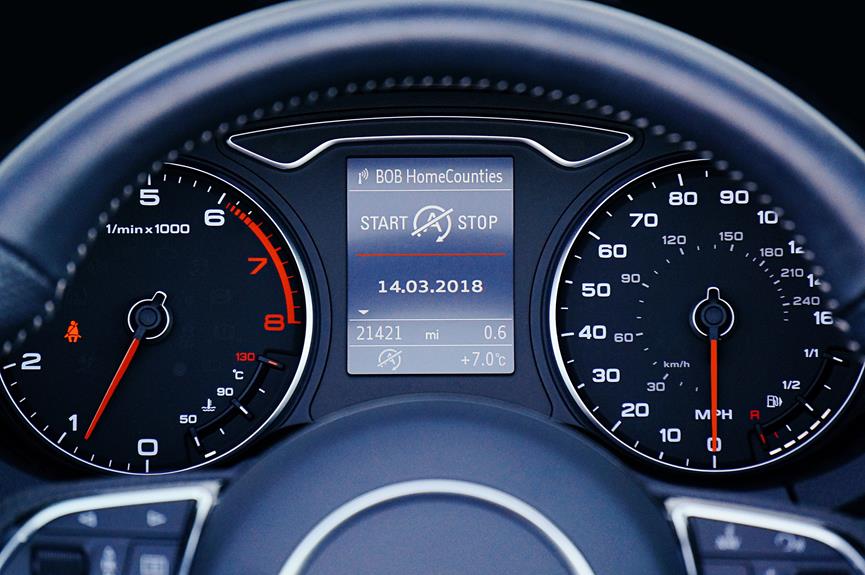Yamaha WaveRunners: Fuel Gauge Defects Exposed
In the world of watercrafts, Yamaha WaveRunners reign supreme. However, they're currently making waves for all the wrong reasons. A proposed class action lawsuit alleges that these high-demand watercrafts have defective fuel gauges that display inaccurate low fuel levels, impacting their usability and safety. Amidst growing online complaints, this article examines these allegations, Yamaha's response, and potential implications for WaveRunner owners.

Yamaha WaveRunners Fuel Gauge Defects
The fuel gauge defects in Yamaha WaveRunners have recently come under scrutiny due to a proposed class action that alleges major inaccuracies in the fuel gauge readings. The accuracy of the Yamaha WaveRunners' fuel gauge is in question, leading to concerns about how the potential defects could impact users. A key issue is the fuel gauge's tendency to display low fuel levels prematurely, presenting significant challenges for users in assessing their remaining range. This defect can potentially restrict the WaveRunners to only about half of their designed range. The alarm associated with the low fuel warning, which cannot be silenced, adds to the user's inconvenience. These fuel gauge defects, therefore, not only disrupt the user's experience but could also pose safety risks during water navigation.
Class Action Claims Against Yamaha
Numerous owners of Yamaha WaveRunners, burdened by the fuel gauge defects and their potential safety implications, have joined forces in a class action lawsuit against the manufacturer, Yamaha. The lawsuit outcome remains uncertain and could potentially take years to resolve, leaving consumers in a state of limbo. The impact on consumers is profound, as many have voiced safety concerns and dissatisfaction with Yamaha's lack of resolution. This lawsuit aims to hold Yamaha accountable for alleged defects, and if successful, could lead to compensations for affected WaveRunner owners. However, until a verdict is reached, owners are left grappling with the defective fuel gauges, potentially undermining their trust in Yamaha's product reliability and overall brand integrity.
False Reporting of Fuel Levels
An integral issue in the class action claims against Yamaha is the WaveRunners' tendency to falsely report fuel levels, a defect that has led to significant confusion and concern among consumers. The purported fuel gauge malfunction essentially creates an illusion of a rapidly depleting fuel tank, even when substantial fuel remains. This can result in unnecessary and frequent refueling stops, thereby adversely impacting the fuel efficiency of the watercraft. Moreover, this flaw potentially jeopardizes the safety of the riders who might be misled into believing that their fuel reserve is alarmingly low. Yamaha's inability to rectify this defect exemplifies a palpable disregard for its customers' needs and safety, thereby intensifying the urgency and validity of the class action claims.
Impact on WaveRunner's Range
Significant reduction in the operational range of Yamaha WaveRunners is a direct consequence of the fuel gauge defects, significantly limiting the watercraft's usability and reliability for extended trips. This has three primary impacts:
- Impact on fuel efficiency: The inability to accurately gauge fuel levels forces users to refuel more often, leading to unnecessary fuel consumption and increased expenses.
- Reduced functionality: The limited range restricts users to shorter trips, diminishing the WaveRunner's overall functionality and value.
- Customer dissatisfaction: The recurring issues and Yamaha's lack of effective solutions have led to widespread customer dissatisfaction, potentially damaging the brand's reputation and customer loyalty.
These issues underscore the need for Yamaha to address the fuel gauge defect promptly and adequately.
Specific Issues With FX1800F-XA Triton Model
The FX1800F-XA Triton model of Yamaha's WaveRunners presents a unique set of difficulties due to its defective fuel gauge. This defect directly impacts the fx1800f xa triton fuel gauge accuracy, leading to uncertainty in fuel consumption. The fuel gauge falsely indicates low fuel levels even when the tank is filled more than half. This inconsistency affects the overall fuel consumption as the model operates safely for only half of its designed range. The fuel alarm, which is supposed to alert the user about low fuel, is inoperative and the touchscreen becomes unresponsive during the fuel alarm, adding to the user's woes. Yamaha's inability to offer a remedy for this defect has led to a widespread dissatisfaction among the WaveRunner owners.
Fuel Alarm and Touchscreen Problems
Experiencing issues with the fuel alarm and touchscreen functionality compounds the challenges faced by Yamaha WaveRunner owners. It is not just the inaccurate fuel gauge readings that disrupt their water adventures, but also the constant fuel alarm disturbances and touchscreen issues.
- The fuel alarm unnecessarily sounds off and cannot be silenced, causing panic and worry.
- Throttle input restrictions occur when the fuel alarm is triggered, impeding WaveRunner performance and overall usability.
- The touchscreen functionality exhibits significant flaws; for instance, fuel usage resets to zero after each engine restart, leading to inaccurate fuel consumption recordings.
These combined defects cause severe inconveniences, adding to the distress of WaveRunner enthusiasts, and call into question Yamaha's commitment to delivering a reliable, high-quality product.
Yamaha's Awareness of the Defects
Despite the ongoing issues that have plagued WaveRunner owners over time, Yamaha has been aware of the fuel gauge defects for a considerable duration. Yamaha's response to customer complaints has been far from satisfactory, with attempts to address the matter appearing as mere rhetoric rather than tangible solutions.
| Yamaha's Awareness | Impact on Customers |
|---|---|
| Knowledge of defects | Distrust and frustration |
| Poor response to complaints | Lack of confidence in Yamaha |
| No viable solutions for defects | Continued inconvenience |
The table above reflects the unfortunate situation that WaveRunner owners confront. It is evident that possible solutions for fuel gauge defects are yet to be provided by Yamaha, a fact that continues to disappoint and inconvenience their loyal customer base.
Lack of Solutions From Yamaha
In response to the fuel gauge defects in their WaveRunners, Yamaha has failed to provide a satisfactory solution. Despite numerous customer complaints, Yamaha's response has been marked by inaction, leading to growing discontent among WaveRunner owners.
- The company has remained largely silent on the issue, offering no clear remedy for the problem.
- Yamaha's refusal to acknowledge the defect or provide a solution has frustrated many customers, potentially impacting WaveRunner sales.
- This lack of resolution raises questions about Yamaha's commitment to customer satisfaction and product quality.
If left unaddressed, the fuel gauge defect controversy could tarnish Yamaha's reputation and result in a significant loss of customer trust, ultimately affecting the company's bottom line.
WaveRunner Owners' Online Complaints
Numerous WaveRunner owners have taken to the internet to voice their frustrations about the fuel gauge defects. They claim the fuel gauge inaccuracies on their Yamaha WaveRunners have significantly impacted their fuel consumption, creating a domino effect on their boating excursions. Owners assert, due to defective fuel gauges, they are unable to accurately judge the remaining fuel levels, often leading to premature return trips or stranding. Many have highlighted instances where the fuel gauge reads full for a while, only to drop dramatically in a short span. This lack of reliability in fuel gauge readings has not only disrupted their boating experiences but also raised safety concerns. These online testimonials further underscore the urgency for Yamaha to address this widespread problem.
Coverage of the Lawsuit
The lawsuit, arising from the collective dissatisfaction voiced by WaveRunner owners online, encompasses a broad range of issues centered on the defective fuel gauges in Yamaha's watercrafts. The legal implications are vast, with a potential for substantial financial impact on Yamaha.
- The potential outcomes could include a court order for Yamaha to repair or replace the faulty gauges, or provide financial compensation to the affected owners.
- There may also be a demand for Yamaha to publicly acknowledge the defect and inform potential buyers about the issue.
- Lastly, a successful lawsuit could set a precedent for similar cases, forcing manufacturers to ensure the accuracy of their product's features.
These outcomes highlight the power of collective action in holding corporations accountable.
Process to Join the Lawsuit
For every individual who has purchased a Yamaha watercraft within the past four years, joining the lawsuit against the alleged fuel gauge defects requires no initial action. The process to join the lawsuit is straightforward and designed to be hassle-free for potential claimants. When a class action lawsuit is filed, all potential claimants are automatically included. You may then receive a notice via email or post providing the relevant details about the case. The notice will also include instructions if you wish to opt-out. If the lawsuit is successful, compensation for affected owners is typically distributed proportionally among claimants, taking into consideration the extent of damages suffered. It's advisable to keep all purchase and service documents as they may be required during the claim process.
Potential Lawsuit Settlement Notifications
Settlement notifications, a crucial component in the class action lawsuit process, are typically sent directly to potential claimants via email or regular mail. These communications serve three main purposes:
- They outline potential settlement amounts, providing a clear indication of the possible financial compensation.
- They detail the impact on Yamaha's reputation, highlighting the significance of this lawsuit to the company's public image.
- They offer instructions on the next steps for claimants, ensuring a smooth transition through the settlement process.
The emotional impact of these notifications is profound. It can evoke feelings of vindication for those who have experienced the fuel gauge defects, and apprehension about the potential damage to Yamaha's reputation.
Time Frame for Class Action Resolution
In understanding the complexity of class action lawsuits, one must note that their resolution can span over months or even years. Notably, the expected fuel gauge defect resolution time can greatly impact WaveRunner usage during this period. Given that the Yamaha WaveRunner fuel gauge defect directly affects the watercraft's usability and safety, a swift resolution is desirable. However, the intricacies of legal proceedings and the magnitude of the class action itself can delay the process. This timeframe could extend from several months to a few years, depending on the court's schedule, the parties' readiness, and the complexity of the issues at stake. Despite these challenges, it is crucial for affected WaveRunner owners to remain hopeful for a favorable and timely resolution.
Role of lawsuitlegit.com
Navigating the complexities of the ongoing class action lawsuit, lawsuitlegit.com plays an instrumental role by providing reliable news and updates regarding the Yamaha WaveRunner fuel gauge defect case. The Yamaha WaveRunners: Role of lawsuitlegit.com is threefold:
- Communication: They bridge the gap between legalese and consumers, making complex information digestible.
- Advocacy: They champion consumer rights, advocating for those affected by this defect.
- Updates: They provide consistent updates on the case, ensuring consumers stay informed.
The impact on consumers is significant. By offering a platform for collective action, lawsuitlegit.com empowers consumers to seek justice. Through their work, they highlight the importance of transparency, accountability, and consumer protection in cases like the Yamaha WaveRunner fuel gauge defect.
About lawsuitlegit.com Newsletter
The lawsuitlegit.com newsletter is a crucial tool that offers weekly updates on ongoing class action lawsuits, such as the Yamaha WaveRunner fuel gauge defect case. This platform has been instrumental in disseminating information about lawsuitlegit.com's role in other class action lawsuits.
| lawsuitlegit.com's Newsletter | Benefits |
|---|---|
| Weekly updates | Stay informed on ongoing lawsuits |
| Covers various sectors | Broad spectrum of legal information |
| Free subscription | Accessible legal updates at no cost |
The benefits of subscribing to lawsuitlegit.com's newsletter are significant for consumers seeking justice. It provides them with timely updates, ensuring they're always informed about the status of their case and any possible settlements. Moreover, it broadens their understanding of class action lawsuits, thereby empowering them to confidently navigate the legal landscape.
Frequently Asked Questions
What Are the Potential Safety Risks Associated With the Fuel Gauge Defect in Yamaha Waverunners?
The defect implications in Yamaha WaveRunners' fuel gauge present distinct safety risks. Erratic readings may result in users being stranded due to miscalculated fuel levels. Furthermore, the inability to silence the fuel alarm may pose distractions, potentially leading to accidents. Users are advised to undertake safety measures like manually tracking fuel usage or keeping close to the shore until Yamaha provides a solution for these inaccuracies.
Are There Any Other Known Defects in Yamaha Waverunners Apart From the Fuel Gauge Issue?
Apart from the fuel gauge issue, Yamaha WaveRunners have not been reported to have other widespread defects. Adhering to WaveRunner maintenance tips can prevent individual issues. Yamaha's quality control processes are designed to ensure product consistency and reliability. However, any mechanical device can potentially experience problems. Owners are encouraged to report any defects to Yamaha directly, to facilitate prompt resolution and contribute to ongoing product improvement.
Can Individual Consumers Take Legal Action Against Yamaha Outside of the Class Action Lawsuit?
Absolutely, individual consumers have the right to pursue legal action against manufacturers like Yamaha outside of a class action lawsuit. This is a fundamental aspect of Consumer Protection Rights. It allows individuals to hold manufacturers accountable for product defects. However, individual lawsuits can be time-consuming and costly, so joining a class action is often a more feasible route for many consumers. It's advisable to consult with a legal professional to understand the best course of action.
How Can a Yamaha Waverunner Owner Manually Check the Fuel Level Due to This Defect?
The defect in Yamaha WaveRunner's fuel gauge significantly impacts the user's ability to accurately monitor fuel levels. Currently, there is no official repair solution provided by Yamaha. However, owners can manually check the fuel level by visually inspecting the tank or using a dipstick. Always ensure safety precautions are taken while doing this. This method, while not ideal, can offer a temporary solution until Yamaha addresses the defect.
Are There Any Other Models of Yamaha Watercrafts That May Be Affected by Similar Fuel Gauge Defects?
While specific data on other affected Yamaha watercraft models remains unclear, anecdotal evidence suggests potential widespread fuel gauge defects. These issues could impact resale values and necessitate additional maintenance. To mitigate these defects, owners are advised to manually check fuel levels and regularly service their watercrafts. More research is needed to fully understand the extent of these defects across Yamaha's range of watercrafts.

This post has been generated by AI and was not reviewed by editors. This is Not legal advice. Please consult with an attorney.




